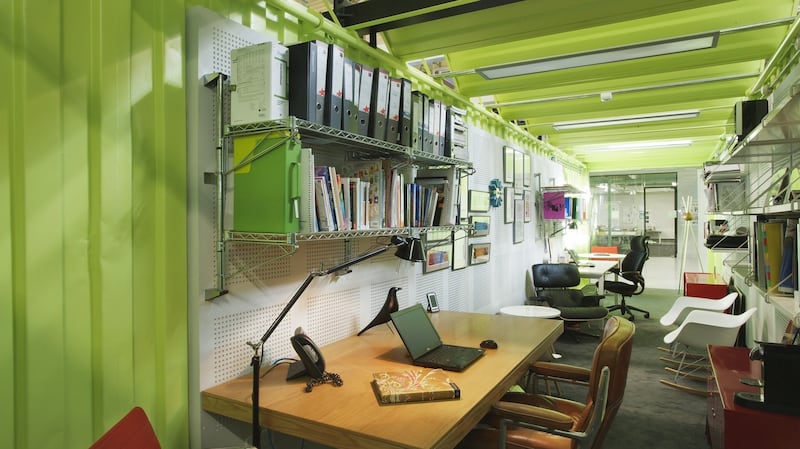Dr Marc Ó Riain is the former president of the Institute of Designers in Ireland 2015-2016 and an internationally award-winning designer of building interiors like the Cliffs of Moher in Clare and the Architecture Factory in Cork. He has completed €230 million in projects, garnering 25 awards over 23 years of practice. He lectures in interior architecture at CIT (Cork Institute of Technology) and is the current editor of Iterations design journal and practice review. He has a PhD in zero-energy retro-fit, a hot environmental topic in the context of our current housing crisis. He lives in a restored 16th-century cottage in Kinsale, part of a cluster of old dwellings associated with the town's 15th-century Carmelite Abbey.
Describe your interiors style
My approach to design is unconventional – probably down to the broad background I have from design, architecture, engineering and sustainability. As to my interior architecture, it attempts to address a user need. My interiors are typically humanistic – spaces that people gravitate towards, places of energy or sympathy. I love adapting old industrial buildings and therefore many designs feature a contrast between old and new, sometimes pared back and sometimes a mix of styles. Maybe I don’t have a style, it’s more an approach.

What room do you most enjoy and why?
I like my office space in the Architecture Factory, perhaps because it’s a reused shipping container and filled with an eclectic mix of mid-century classics gathered over time. It is open and connected to other internal environments with glazed ends framing vistas of the larger space. When I don’t want actively to connect, I wear headphones.
What items do you love most?
I can't pick one. I enjoy my Eames Time-Life chair and my Harry Bertoia Bird chair and ottoman. The Eames is a beaten-up old office chair with cracked leather which I bought off Simon O Driscoll, the furniture designer. The Bertoia, a mid-century classic from Knoll, is great for slouching back in and watching a rugby game or a movie. The one other thing I love is my Ecuadorian balsa surfboard, which hangs in my hall and goes out into the raging ocean in Cork with me – on smaller days.
Who are your favourite designers?
There are a lot I look up to because they have great process and a lot I hate because they are simply capitalising or prostituting one idea repeatedly. I have seen too many bird-inspired buildings from Calatrava, who was a hero of mine, Gehry seems disinterested in function any more though his buildings bravely oppose convention, which I admire. There is a lot to admire in the abstraction of [Brazilian designer] Humberto Campana and the critical process, making and aspiration of Joseph Walsh's work.
What artists do you most admire?
Maser and Banksy are brilliant, anti-establishment, ballsy with great process and something to say.
Biggest interior turn off?
Stuff that doesn’t work. Some people don’t bother hiring a designer or architect and spend a lot of money building something that doesn’t work. Many public buildings have hard surfaces, noisy interiors and are hard to navigate, are difficult to use and can become sick buildings in which to work. This drives me cracked. While I am sure I have made some of these mistakes in a 25-year career, I have learned from them and I now teach interior architecture students at CIT how to avoid the same issues and design intelligently.
Destination that stands out?
Places like Cuba, Morocco and San Francisco have a sense of place and an original character. Too many places I have visited have a growing sense of homogeneity and high streets in Singapore start to look the same as those in Paris or London. We will lose the character of our cities if we replace buildings with characterless glass boxes, occupied by global brands that do little for the community from whom they profit. Streets like Oliver Plunkett or North Main Street in Cork still have the jumble of character of independent retailers. Retaining that sense of the 'here-here' is important both culturally and economically.
If you had €100,000 to spend on anything for the home, what would that be?
New triple-glazed, low-energy windows on the front five windows, an Air Source heat pump, photovoltaic and solar water panels, an electric car charging point and I would also reface my kitchen units and wardrobes. I'd love to convert the downstairs toilet into a den or an office, but there are other critical and functional elements that would allow me to finally shift the 15th-century building into a truly low-energy retro-fit, the key premise of my PhD.











